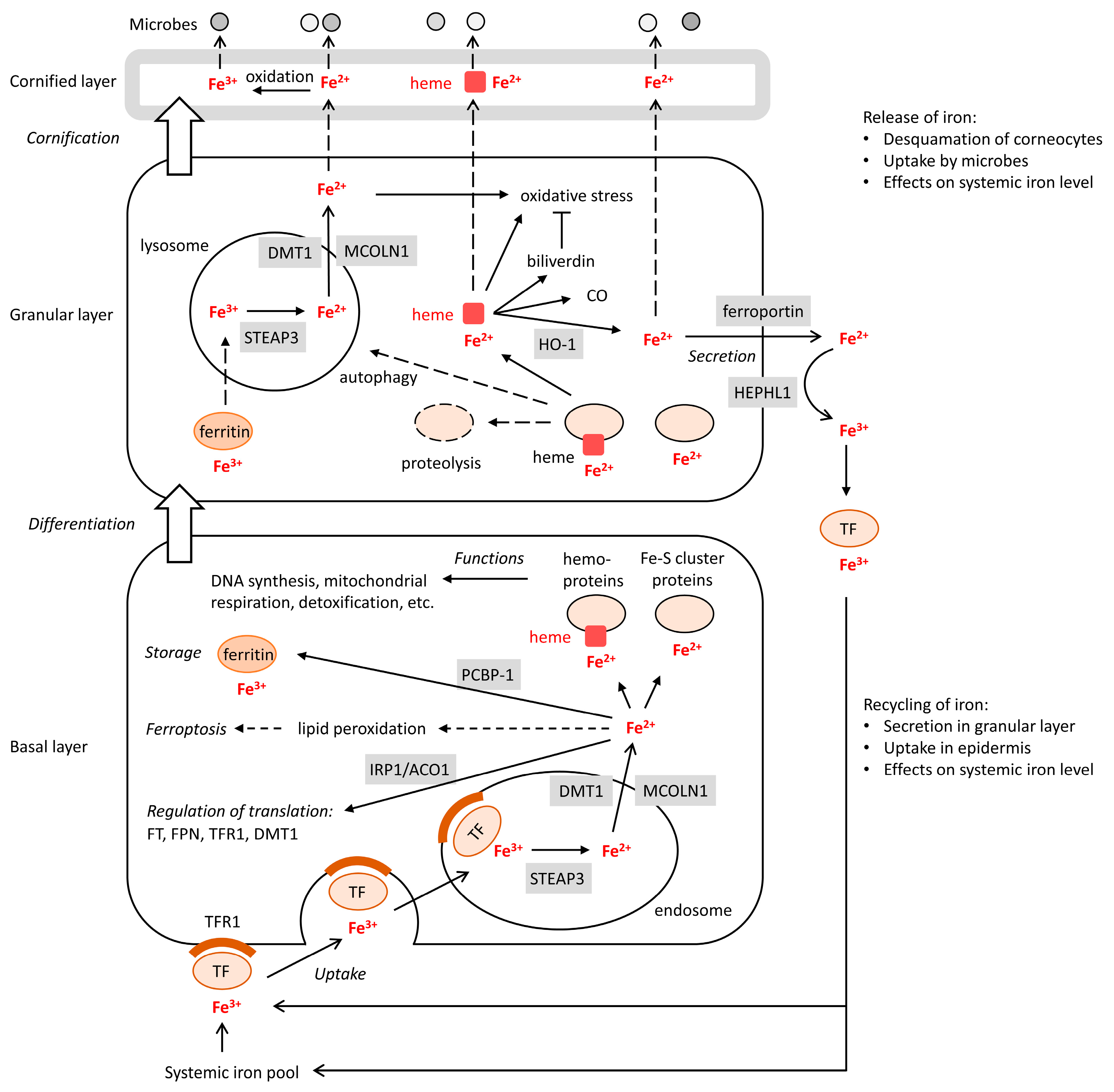
Iron Metabolism in Skin: Implications for Skin Ageing and Health

Schematic depiction of the iron metabolism in the epidermis. The process of keratinocyte differentiation is represented by cells in the basal layer, the granular layer and the cornified layer. The distribution of iron-binding proteins and regulators of iron metabolism and transport is shown according to the evidence and hypotheses discussed in the main text. Alternative pathways of iron turnover lead either to the release of iron from the epidermal surface, associated with the uptake of a fraction of total iron by microbes, or to the recycling of iron.
Researchers from Medical University of Vienna, led by Dr. Leopold Eckhart, has published a comprehensive review paper examining the intricate metabolism of iron in the skin, with significant implications for our understanding of skin ageing and related challenges. This research sheds light on the crucial role of iron in maintaining skin health and its potential impact on various skin conditions.
The Vital Role of Iron in Skin Health
The skin serves as the body’s primary barrier against external stressors, a function that is largely supported by the continuous regeneration of the epidermis. This process demands high metabolic activity and involves the shedding of superficial cells, which results in the loss of vital metabolites, including iron.
Iron is pivotal in numerous essential epidermal processes, such as cellular respiration and the detoxification of harmful substances (xenobiotics). Moreover, the microorganisms residing on the skin surface also depend on iron, supplied through the turnover of epithelial cells.
Key Findings
The review focuses on the metabolism of iron within the epidermis, particularly in epidermal keratinocytes.
Dr. Leopold Eckhart and colleagues explain how the metabolism of iron in the epidermis is regulated by genes expressed differently in the inner and outer layers, creating a system that supports iron recycling while preventing excessive iron loss from the skin surface.
The researchers show that terminally differentiated keratinocytes express Heme Oxygenase-1 (HMOX1), ferroportin (SLC40A1), and hephaestin-like 1 (HEPHL1), which facilitate the recycling of iron from heme before keratinocytes undergo cornification.
Authors of the review also discuss changes in epidermal iron metabolism in various skin diseases, offering new perspectives on potential therapeutic targets.
Dr. Eckhart will join Skin Ageing & Challenges 2024 this November to discuss about the importance of iron in skin health. Join us at Corinthia Palace Malta to better understand how iron metabolism changes with ageing and in skin diseases, and how scientists can develop innovative treatments to improve skin health and combat ageing.
Photo credits: Surbek, M.; Sukseree, S.; Eckhart, L. Iron Metabolism of the Skin: Recycling versus Release. Metabolites 2023, 13, 1005.
Did you like the news ? Please share it with your circle.
